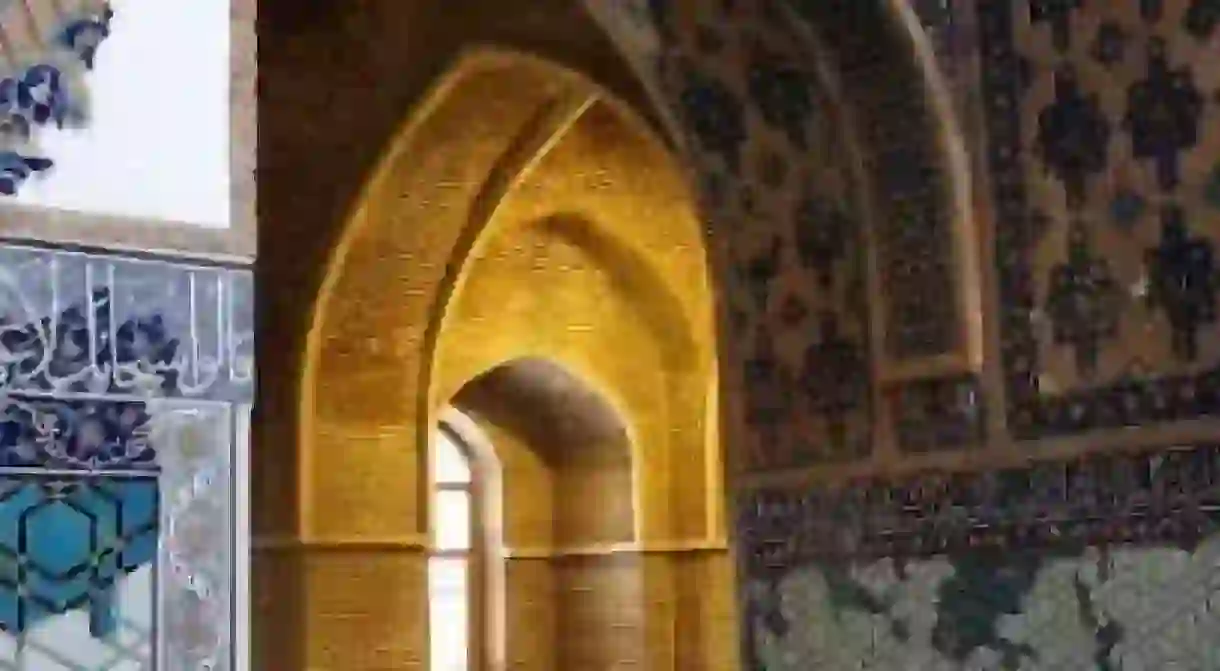The Top 10 Things To Do And See In Tabriz

A historical capital, Tabriz is the largest city in the northwest of modern-day Iran, and the center of the country’s Azeri community. Green, mountainous, and metropolitan the city and its surrounds are a popular tourist destination. Its rich cultural heritage bestows to posterity fabulous mosques, churches, and fortresses, whilst Iranian Azerbaijan boasts some of the most stunning landscapes in the country.

Tabriz Bazaar
Bazaar, Market

By common consensus, the highlight of any trip to Tabriz has to be exploring the delights of its old bazaar. One of the most beautiful bazaars in the country, this UNESCO World Heritage site was an important trading point along the Silk Road and flourished under the Safavids in the 16th century. High domed ceilings, the occasional caravanserai and a seemingly endless maze of alleyways, navigating the bazaar is a reliably pleasant experience. Everything from spices to jewelry, to pots and pans are sold here and the carpet section is particularly renowned.
Blue Mosque
Mosque

The Blue Mosque, known as Goy Masjid in Azeri, still bears the scars caused by a massive earthquake that struck Tabriz in 1779. Only the iwan of the entrance remains from the original structure, but much of the mosque has been reconstructed in the past 50 years. Dating back to 1465, the iwan demonstrates the intricate blue tile work after which the mosque derives its name, as well as some fine Islamic calligraphy. The patchy remains are an unnerving reminder of Iran’s vulnerability to earthquakes, sitting atop many major fault lines.
Tabriz citadel
Building
What remains of the Tabriz citadel (arg-e Tabriz) dates back to the 14th century, when it was constructed as a mausoleum under the Ilkhanate dynasty. Re-appropriated as a military compound in the 19th century during the Russo-Persian wars, the structure has a long and varied history. The edifice suffered further damage by Russian shelling in 1911, and only in recent decades has it undergone some renovation work. The imposing stone building is one of the most famous landmarks in Tabriz and is located centrally on Imam Khomeini Street. Tabriz Citadel | © ninara/Wikicommons
Jameh Mosque
Bazaar, Mosque
Like many old buildings in Tabriz, the Jameh Mosque situated adjacent to the Bazaar, has taken a battering from various earthquakes over the centuries, and has undergone various reconstructions. As a result, the mosque is a curious and unique mixture of old and new features. It is most noteworthy for its two tall three-tiered minarets and as well as the impressive mosaic work framing the mosque’s entrance. Three-tiered minarets, Jameh Mosque | © yeowatzup/WIkicommons
Azerbaijan Museum
Mosque, Museum
The Azerbaijan Museum, located centrally not far from the Blue Mosque, houses some impressive pieces and deserves the hour or so it will take you to explore. The museum has three halls, and its most unique artifacts date back to the Iron Age. Other objects excavated from Iranian Azerbaijan are also featured prominently, although it is the harrowing sculptures in the basement reflecting on the themes of violence and war, which will stay with you.
Mausoleum of Poets
It’s not an exaggeration to say that Iranians love ostentatious mausoleums almost as much as they love poetry. The Mausoleum of Poets, just outside the city center combines both cultural phenomena, housing the graves of Tabriz’s great poets and thinkers of the past. Over 400 notables of the arts and letters, from between the 9th and 20th centuries, are buried here. The current mausoleum, concrete, angular, and imposing, was completed in the 1970s, and is surrounded by a pleasant park. Mausoleum of Poets | © Elmju/Wikicommons
Elgoli Park
Park
Southeast of the city center is the expansive, verdant and peaceful Elgoli Park. Popular with Iranian families, the park is a great place to spend a relaxing evening, pick up a street side corn on the cob, picnic with friends, and maybe even play a spot of badminton. Shady and with great views of the city from its highest point, the park surrounds a small lake, at the center of which is a reasonably priced traditional restaurant.
Kandovan village
Often compared to Turkey’s Cappadocia, Kandovan village is home to a fascinating collection of troglodyte homes carved into volcanic rock on the side of a cliff. The traditional settlement, expanded with more modern rural housing at its base, is still inhabited by a few hundred villagers. It will take about one hour to reach Kandovan by car from Tabriz. It is especially worth the effort during the winter when snowfall renders the rock dwellings indescribably picturesque. Kandovan Village | © Adam Jones/Wikicommons
St Stephanos Monastery, Jolfa
Church, Monastery
Tabriz and Iranian Azerbaijan have a sizeable Armenian Christian community, and as a result you will find several churches in the region. There are a number in Tabriz itself (St Mary’s Church dates back to the 12th century), but the most visit-worthy is the St Stephanos Monastery just outside the border town of Jolfa, about one and a half hour’s drive from the city. Built in the 9th century, the holy site sits alone in the lowlands of a large valley. Reconstructed several times, the monastery is in good condition, and often surprisingly busy given its isolated location. St Stephanos Monastery | © farrokhi/Wikicommons
Eynali Mountain Range
By car, foot, or telecabin, ascending the Eynali Mountain range just north of Tabriz will reward climbers with exceptional views of the city below – and a lasting sense of achievement. The mountain’s peak is invariably a little nippy, especially at night, so be sure to dress appropriately. A cup of Iranian tea complements the fresh mountain air well, but there are also venues for more substantial nourishment around.













